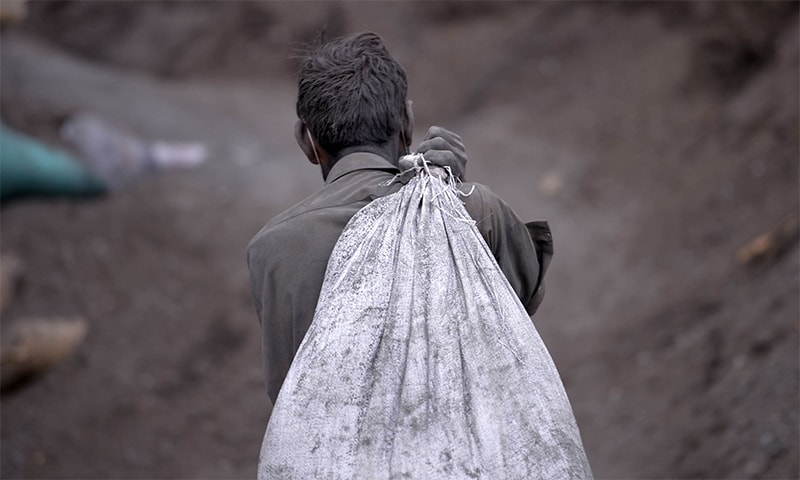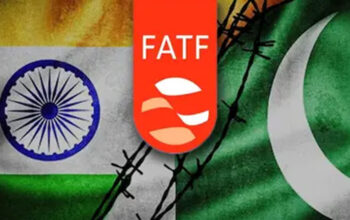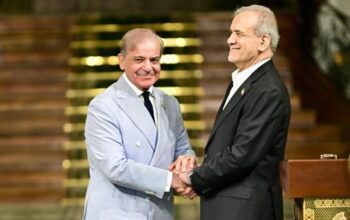By Staff Reporter
ISLAMABAD: Finance Minister Muhammad Aurangzeb will step into the spotlight today, unveiling the federal budget for 2025-26 in parliament, a fiscal blueprint pegged at Rs17.6 trillion. That’s a notable trim from last year’s Rs18.78 trillion, signalling a shift toward restraint as the nation grapples with persistent economic headwinds. The stakes are high, with the Federal Board of Revenue (FBR) tasked with collecting Rs14.02 trillion, a steep climb from this year’s revised target of Rs12.33 trillion, a figure already slipping out of reach as the fiscal year nears its close on June 30.
The budget arrives under intense scrutiny, with the International Monetary Fund (IMF) watching closely and domestic pressures mounting. Public sector employees are eyeing salary hikes, while the government juggles a hefty debt obligation.
Here’s what’s on the table, and what it means for Pakistan’s economic trajectory.
Aurangzeb’s plan sets total federal expenditure at Rs17.573 trillion, with current spending eating up Rs16.286 trillion and development getting a modest Rs1 trillion slice via the Public Sector Development Programme (PSDP). Revenue, meanwhile, hinges on gross receipts of Rs19.298 trillion, Rs14.131 trillion from the FBR and Rs5.167 trillion from non-tax sources. After handing provinces Rs8.2 trillion under the National Finance Commission (NFC) Award, the federal government is left with net revenue of Rs11.072 trillion. That leaves a gaping hole: Rs6 trillion to Rs7 trillion in deficit financing to balance the books.
Spending priorities reveal the government’s balancing act. Defence remains a non-negotiable line item at Rs2.55 trillion, underscoring its centrality to national policy following last month missiles and drones battle with rival India. Markup payments on debt, though reduced to Rs8.2 trillion from last year’s Rs9.7 trillion because of lower interest rates, still loom large, eating into fiscal flexibility. Pensions for federal employees are slated at Rs1.05 trillion, a rising cost as retirees multiply. Subsidies, pegged at Rs1.186 trillion, signal continued wasteful support for mostly politics-backed state-run companies, while grants, totaling Rs1.9 trillion, round out the major expenditures, painting a picture of a government stretched thin across competing demands.
Revenue projections hinge on a mix of optimism and pressure. Non-tax collections are expected to range between Rs4 trillion and Rs4.5 trillion, while provinces will receive Rs8 trillion, representing 60% of the federal divisible pool. Under IMF conditions, provinces are required to generate a surplus to shrink the consolidated deficit, a challenging prospect given their spending patterns. The FBR’s Rs14.02 trillion target is the budget’s linchpin, and its biggest question mark. This year’s revised goal of Rs12.332 trillion already looks out of reach, casting doubt on next year’s even loftier aim. Pakistan’s tax-to-GDP ratio has long lagged, and broadening the base remains a slog. If the FBR stumbles, the deficit could widen, rattling markets and the IMF, which has tied its support to revenue performance.
For public sector employees, relief is on the table, though tempered by fiscal realities. The Finance Ministry has proposed salary increases ranging from 5% to 12.5%, with indications pointing toward a modest 7.5% to 10%. A Disparity Allowance of up to 30% for grades 1 to 16 aims to narrow income gaps, a gesture toward fairness as inflation erodes purchasing power. However, these raises inflate the Rs1.05 trillion pension bill and recurring expenses, forcing a delicate trade-off between supporting workers and maintaining fiscal discipline. Plugging the Rs6 trillion to Rs7 trillion gap will keep policymakers up at night. Borrowing costs, currency stability, and investor confidence hang in the balance. The drop in markup payments to Rs8.2 trillion from Rs9.7 trillion offers some relief, but it’s a small win against the broader challenge of servicing Pakistan’s debt mountain.
Dawn newspaper reported that the coalition government, led by Prime Minister Shehbaz Sharif, is retooling its fiscal playbook as it races toward a record revenue target of nearly Rs14 trillion for the next fiscal year, a 22% jump from this year’s projections. With limited room for fresh tax measures, the administration is shifting its rhetoric from “broadening the tax base” to “equity,” a pivot aimed at justifying steeper levies on lower-income segments amid mounting economic pressures.
This strategic turn, set to dominate Finance Minister Aurangzeb’s today’s budget speech, hinges on ambitious goals tied to the IMF program. The government pegs autonomous revenue at Rs12.845 trillion, banking on 4.2% GDP growth and 7.5% inflation. To close the gap to Rs14 trillion, it’s counting on Rs655 billion from new tax measures and Rs400 billion from enforcement, numbers slated for final approval at Tuesday’s cabinet meeting.
Yet, doubts swirl over the FBR’s ability to deliver. The agency’s enforcement track record is shaky, with no meaningful reforms to field operations in recent years. A plan to equip officers with vehicles was scrapped after pushback, leaving collection efforts hobbled. Ministry of Finance officials, meanwhile, tout optimistic forecasts that critics say gloss over a grim economic reality: large-scale industries are shrinking, and heavy taxes on real estate and consumer goods are choking growth. With consumer confidence waning, the revenue target looks increasingly out of reach.
The government has set a tax-to-GDP ratio goal of 12.3% for FY26, with the FBR shouldering 10.6%, supplemented by provincial collections and the petroleum development levy. But fiscal constraints are glaring. The federal Public Sector Development Programme (PSDP) is dwarfed by those of Punjab and Sindh, and in a rare move, Islamabad is leaning on these provinces to fund dam construction, a sign of stretched resources at the center.
The shift to “equity” marks a departure from past efforts to widen the tax net. Previously, the FBR stripped exemptions from essentials like food, stationery, and books. Now, it’s raising lower tax rates across sectors to squeeze out more revenue. Withholding taxes on dividends, stock markets, and financial transactions are poised to climb. Tobacco processing will face levies at the Thresher Unit Level, requiring bigger machinery to boost quality and tax yields. A new transaction tax will favor digital payments with lower rates while hitting cash deals harder, replacing the filer-non-filer divide.
New measures include taxes on solar panels, processed foods, and a carbon levy, steps that could jolt consumers and businesses. A solar tax risks curbing clean energy uptake as power costs soar, while food taxes may pinch household budgets. “These are bold moves, but they’re not without fallout,” said a senior official involved in tax policy, speaking on condition of anonymity.
Not all sectors face the squeeze. Agriculture gets a breather with an IMF-backed exemption on fertilisers and pesticides extended for another year, easing farmers’ input costs. Lower-income salaried workers may see relief too, with officials hinting at a higher exemption threshold and reduced rates for those earning around Rs100,000 monthly. Elsewhere, the government is mulling taxes on former Fata and Pata regions, exempt until June 30, 2025, though Sindh is pushing back, urging a pass on farm product levies, including agricultural income tax.
Former FBR Chairman Dr. Irshad Ahmed isn’t sold. “Such additional revenue merely increases the burden on existing taxpayers while failing to expand the tax base effectively,” he said, pointing to enforcement as the real bottleneck. He argues the FBR’s field operations need an overhaul—officers are desk-bound, cut off from potential taxpayers. A past bid to set up robust district-level tax offices was stymied by bureaucracy, he recalled. Despite troves of taxpayer data, the agency lacks the tools to mine it for evaders, a gap that demands investment in staff and systems.
Overall the budget 2025-26 budget is less about bold moves and more about survival. The budget’s success teeters on a knife-edge. Will higher taxes fuel revenue or strangle an economy already reeling from industrial decline and tepid investment? Without enforcement muscle, the gains may be fleeting, leaving evaders unscathed.
Copyright © 2021 Independent Pakistan | All rights reserved




